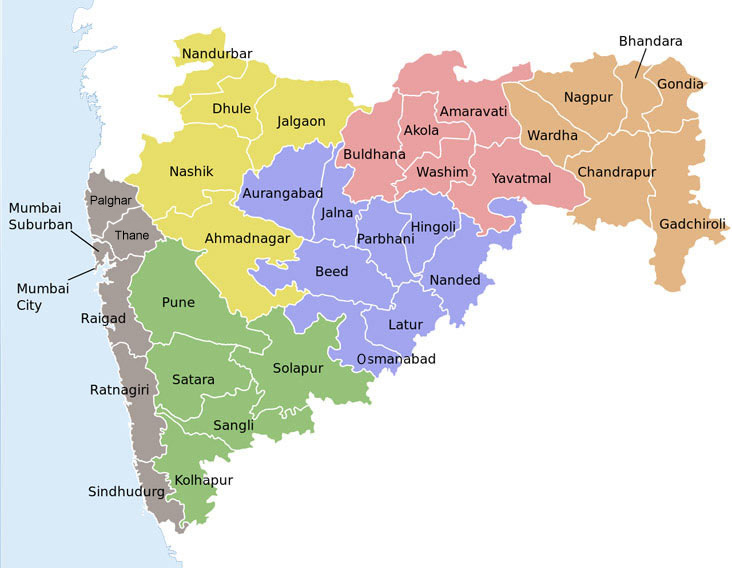
As Maharashtra’s electoral landscape shifts, tier-2 and tier-3 cities like Nashik, Solapur, Aurangabad, and Sangli emerge as pivotal battlegrounds. With local issues such as agrarian distress, industrial stagnation, and infrastructure gaps taking center stage, political parties are growing up to the realisation of adapting their strategies to win over these crucial, overlooked regions
Maharashtra, one of India’s most politically dynamic states, is witnessing a subtle but significant shift in its electoral battleground. Traditionally, the political discourse in the state has been dominated by larger metropolitan hubs like Mumbai, Nagpur and Pune. However, in recent years, smaller cities — notably Nashik, Solapur, Aurangabad, Sangli, and others — have emerged as crucial areas of contestation. These tier-2 and tier-3 cities, once relegated to the political sidelines, are now becoming central to the electoral strategies of major political parties. The rise of these cities as critical electoral battlegrounds marks a shift in the political landscape, driven by a combination of economic, social, and political factors.
Tier-2 and tier-3 cities in Maharashtra have historically been viewed as peripheral when compared to the sprawling urban centers of Mumbai, Nagpur and Pune. These megacities, with their immense economic clout, population density, and media presence, naturally drew the lion’s share of attention from political parties. However, as urbanisation spreads and political dynamics evolve, the relevance of these smaller cities has risen.
Smaller cities like Nashik, Solapur, Aurangabad, and Sangli represent a significant portion of Maharashtra’s voting populace. These cities are no longer isolated or disconnected from the broader state or national political conversation. With rising literacy rates, increased economic activity, and improved infrastructure, they now exert considerable influence over the state’s electoral outcomes. The fact that there has been a considerably heart-burn on parties vying for seats there is a strong indicator.
The changing demographics and aspirations of voters in these cities have forced political parties to recalibrate their strategies. As cities like Nashik and Aurangabad grow in prominence, their unique set of local issues — different from those of larger metros — are now taking center stage in political manifestos.
Local issues vs. urban concerns
One of the key reasons for the increasing importance of tier-2 and tier-3 cities is the distinct nature of the issues they face. In Mumbai and Pune, the political narrative is often dominated by concerns about infrastructure development, traffic congestion, housing, and the economy of the megacities. While these are also relevant in smaller cities, the priorities here often revolve around more localized concerns such as agrarian distress, water shortages, industrial stagnation, and unemployment.
In Solapur, for example, the textile industry, once the backbone of the city’s economy, has been in steady decline. The closure of mills and factories has resulted in high unemployment and economic instability, making job creation a critical electoral issue. Local politicians are now under increasing pressure to deliver on promises of reviving the industrial sector, attracting investment, and creating sustainable jobs.
In Nashik, the agricultural belt that surrounds the city remains a vital source of employment and economic activity. The city is a major producer of grapes and onions, both of which are sensitive to fluctuations in market prices. Any disruptions in agricultural trade or unfavourable policies have a direct impact on the livelihoods of a large section of Nashik’s voters. Thus, issues like farm loan waivers, minimum support prices (MSP), and irrigation facilities become crucial electoral touchpoints.
Aurangabad, with its historical significance and industrial base, faces challenges related to water scarcity and infrastructure development. Despite its status as an important cultural and economic hub, the city has struggled with issues of uneven development and poor urban planning. The city’s voters are increasingly vocal about their demands for better civic amenities, infrastructure improvements, and equitable growth. Moreover, Aurangabad’s identity as a city with a large minority population has also made it a focal point for political parties looking to consolidate their vote banks along communal lines.
Sangli, known for its agricultural economy, faces challenges related to rural distress and water management. The region’s dependence on sugarcane cultivation makes it particularly vulnerable to water shortages and droughts, an issue that has been exacerbated by erratic rainfall patterns. In recent years, Sangli has also seen a rise in cooperative movements, especially in the sugar and dairy sectors. These cooperatives, as they have in the past, hold significant political power and are often key players in local elections, making them critical allies for any party hoping to secure votes in the region. The Western Maharashtra compared to Marathwada and Vidarbha, the eastern fringes of the state, has produced most chief ministers and other influential leaders, if the record is anything to go by.
Political strategies in play
Recognizing the importance of these smaller cities, political parties are now tailoring their campaign strategies to address the specific concerns of these regions. In the past, sweeping promises made to urban voters in Mumbai and Pune often overshadowed the needs of tier-2 and tier-3 cities. However, with the growing realization that these cities can swing electoral fortunes, parties have started to adopt a more nuanced approach.
For instance, the ruling Bharatiya Janata Party (BJP) has made concerted efforts to expand its base in these smaller cities by focusing on local governance and infrastructure projects. The party’s push for smart cities and urban renewal schemes has been met with mixed reactions, but it has certainly drawn attention to the developmental needs of cities like Nashik and Solapur. Additionally, the BJP has also focused on consolidating its rural vote bank by addressing agrarian issues and promising better irrigation facilities in regions like Sangli.
On the other hand, the Shiv Sena, with its deep roots in Maharashtra’s politics, has traditionally drawn support from urban areas. However, under Uddhav Thackeray’s leadership, the party has made efforts to expand its appeal to voters in smaller cities and rural areas. By focusing on local governance issues and positioning itself as a protector of Marathi identity, the Shiv Sena has managed to gain a foothold in places like Aurangabad and Nashik.
The Nationalist Congress Party (NCP) and the Indian National Congress (INC), which have historically relied on their rural and cooperative sector support, continue to dominate many tier-2 and tier-3 cities, especially in regions like Sangli and Solapur. However, these parties are now facing stiff competition from the BJP and the Shiv Sena, forcing them to innovate their strategies and re-engage with voters at the grassroots level.
As Maharashtra heads into future elections, the importance of its tier-2 and tier-3 cities cannot be overstated. Cities like Nashik, Solapur, Aurangabad, and Sangli are no longer mere footnotes in the state’s political landscape; they are now battlegrounds where elections are won or lost. Local issues, ranging from agrarian distress to industrial stagnation and infrastructure development, are increasingly shaping the political discourse in these cities. Political parties that fail to recognize and address the unique needs of these regions do so at their own peril. The upcoming elections will serve as a litmus test of how well these smaller cities have been integrated into the broader political framework of Maharashtra.

A Column By
Raju Korti – Editor
The Resource 24X7
A Journalist With 4 Decades of Experience With Leading Media Houses.
